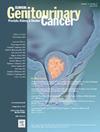睾丸癌患者阿片类药物的使用:模式和危险因素。
IF 2.7
3区 医学
Q3 ONCOLOGY
引用次数: 0
摘要
处方阿片类药物的使用是导致慢性依赖和相关发病率和死亡率的一个途径。研究表明,泌尿外科手术后接受麻醉的男性持续使用阿片类药物的风险增加。然而,与睾丸癌患者持续使用相关的因素却知之甚少。材料和方法:对2009年至2021年间接受睾丸切除术的睾丸癌患者的Truven Marketscan数据库进行了查询。年龄在18岁以下、在研究期间没有保险、在睾丸切除术前3个月服用阿片类药物处方或先前有阿片类药物使用障碍的患者被排除在外。亚组分析通过接受晚期治疗进行,定义为化疗和/或腹膜后淋巴结清扫(RPLND)。阿片类药物暴露定义为在最后一次治疗后30天内收到≥1张阿片类药物处方。在接受晚期治疗的患者中,阿片类药物的预处理使用超过口服吗啡当量(OME)的队列中位数被纳入阿片类药物暴露的定义。使用多变量逻辑回归来确定与我们的主要结局相关的危险因素:在最后一次治疗后31至90天和91至180天内,≥1个填充阿片类药物处方。结果:5409例患者中,2115例(39.1%)接受了晚期治疗:化疗1697例(31.4%),RPLND 185例(3.4%),化疗和RPLND(联合)223例(4.3%)。阿片类药物暴露与最后一次治疗后31至90天(OR 4.67)和91至180天(OR 4.74,均P < 0.001)服用阿片类药物处方相关。在多变量分析中,化疗和联合治疗,而不是单独的RPLND,与治疗后31至180天的阿片类药物使用独立相关(P < 0.001)。结论:睾丸切除术后接受阿片类药物处方的睾丸癌患者在治疗后31至180天更有可能需要额外的阿片类药物处方。晚期化疗单独或联合RPLND,而不是单独RPLND,增加阿片类药物依赖。本文章由计算机程序翻译,如有差异,请以英文原文为准。
Opioid Use in Patients With Testicular Cancer: Patterns and Risk Factors
Introduction
Prescription opioid use is a gateway to chronic dependence and associated morbidity and mortality. Research has demonstrated that men receiving narcotics after urologic surgery are at increased risk of persistent opioid use. However, factors associated with persistent use in testicular cancer patients specifically are poorly understood.
Materials and methods
The Truven Marketscan database was queried for patients with testicular cancer who underwent orchiectomy between 2009 and 2021. Patients who were under 18 years old, lacked insurance coverage during the study period, filled opioid prescriptions 3 months prior to orchiectomy, or had prior opioid use disorder diagnoses were excluded. Subgroup analysis was performed by receipt of advanced treatment, defined as chemotherapy and/or retroperitoneal lymph node dissection (RPLND). Opioid exposure was defined as receipt of ≥ 1 opioid prescriptions within 30 days of last treatment. Among those who underwent advanced treatment, pretreatment opioid use over the cohort median in oral morphine equivalents (OME) was included in the definition of opioid exposure. Multivariable logistic regression was used to identify risk factors associated with our primary outcome: ≥ 1 filled opioid prescription between 31 to 90 days and 91 to 180 days after last treatment.
Results
Of 5409 total patients, 2115 (39.1%) underwent advanced treatment: 1697 (31.4%) chemotherapy, 185 (3.4%) RPLND, and 223 (4.3%) chemotherapy and RPLND (combination). Opioid exposure was associated with a filled opioid prescription at 31 to 90 (OR 4.67) and 91 to 180 days (OR 4.74, both P < .001) after last treatment. On multivariate analysis, chemotherapy and combination therapy, but not RPLND alone, were independently associated with opioid use at 31 to 180 days post-treatment (P < .001).
Conclusions
Testicular cancer patients who received opioid prescriptions after orchiectomy were more likely to require additional opioid prescriptions 31 to 180 days after treatment. Advanced treatment with chemotherapy alone or combined with RPLND, but not RPLND alone, increased the opioid dependence.
求助全文
通过发布文献求助,成功后即可免费获取论文全文。
去求助
来源期刊

Clinical genitourinary cancer
医学-泌尿学与肾脏学
CiteScore
5.20
自引率
6.20%
发文量
201
审稿时长
54 days
期刊介绍:
Clinical Genitourinary Cancer is a peer-reviewed journal that publishes original articles describing various aspects of clinical and translational research in genitourinary cancers. Clinical Genitourinary Cancer is devoted to articles on detection, diagnosis, prevention, and treatment of genitourinary cancers. The main emphasis is on recent scientific developments in all areas related to genitourinary malignancies. Specific areas of interest include clinical research and mechanistic approaches; drug sensitivity and resistance; gene and antisense therapy; pathology, markers, and prognostic indicators; chemoprevention strategies; multimodality therapy; and integration of various approaches.
 求助内容:
求助内容: 应助结果提醒方式:
应助结果提醒方式:


